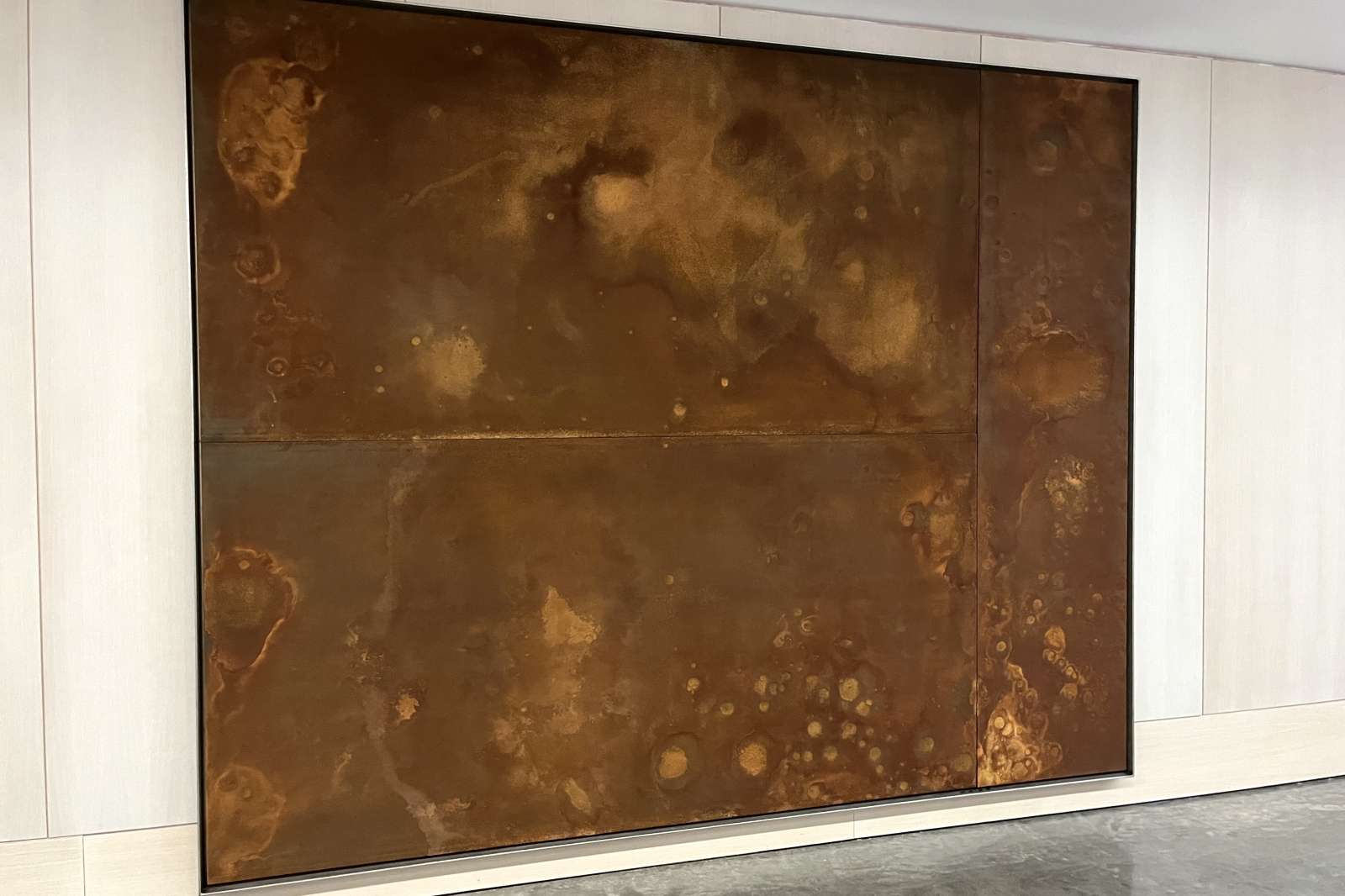Matthew Day Jackson
Nearside (rust), 2013
Plastic, iron oxide on panel, and stainless steel frame
Second Floor, Brockman Hall for Physics
Gift of Carol and John Finley
Matthew Day Jackson investigates complex relationships between technology and human history, as manifested through pivotal events such as the development of the atomic bomb and the Apollo 11 Moon landing. Exploring connections between scientific advancements and notions of social progress, Jackson’s work exists in a realm of poetic ambiguity, inviting viewers to consider the impact of science and technology on our shared human experience.
Nearside (rust) is created by allowing iron oxide to erode a plastic substrate, resulting in a surface that echoes the lunar hemisphere that always faces Earth. Its rust color and indentations mimic the sun's light casting shadows across vast volcanic deposits, remnants of ancient lava flows, that characterize the nearside of the Moon. By confronting the viewer with this large-scale work, Jackson invites us to consider the farthest distance mankind has traveled, both physically and technologically, and the resulting implications for the future.
About the Artist
Matthew Day Jackson (b. 1974, Panorama City, CA) earned a BFA from the University of Washington, Seattle and an MFA from Rutgers University. He has held several artist residencies, including at the Chinati Foundation in Marfa, Texas; the Portland Institute for Contemporary Art in Oregon; and the Skowhegan School of Painting and Sculpture in Maine. Jackson has been featured in international solo exhibitions, such as the ZKM Museum of Contemporary Arts, Karlsruhe Germany; the Contemporary Arts Museum Houston; and MIT List Visual Art Center, Cambridge, Massachusetts. Jackson’s work is held in numerous public collections, including the Metropolitan Museum of Art, New York; the Whitney Museum of Art, New York; the Rubell Museum, Miami; and the Blanton Museum at the University of Texas, Austin. Jackson lives and works in Brooklyn, New York. .





